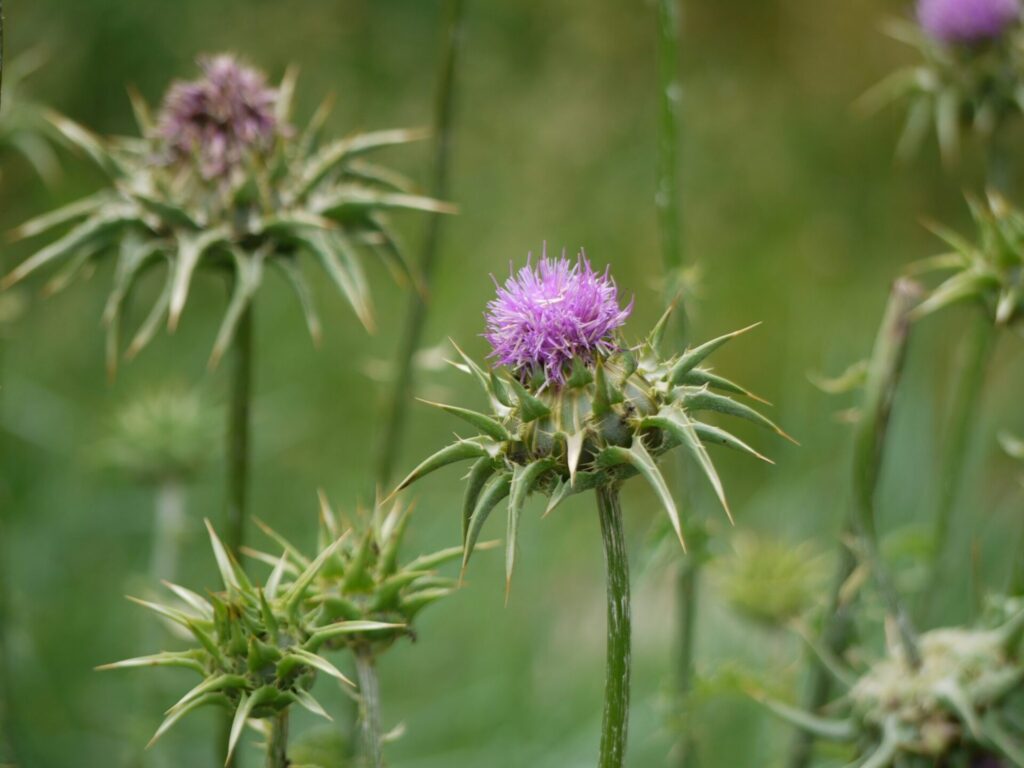Milk thistle
Silybum marianum (L.) Gaertn.
Compositae
Milk thistle is a large biennial plant, which can reach 1m50 during flowering. Its thistles have strong thorns, its leaves are broad and veined with white streaks. It has a flowering head similar to small artichokes edged with sharp points. A single plant produces several thousand fruits, achenes surmounted by an egret. Milk thistle is native of the Mediterranean and it is often found in the south of France near homes and roadsides.
A legend tells that the Virgin Mary, while traveling from Judea to Egypt to escape Herod, would have hidden Baby Jesus under a grove of thistles, where she would have breast fed him. The characteristic white veins of the leaves of this species are the remnant of milk drops of the Virgin Mary, hence the name “milk thistle”.
Milk Thistle is a medicinal herb that has been used for a long time to relieve liver disease. The Roman author Pliny the Elder (23-79 AD JC) recommended taking the juice of the plant, mixed with honey, to eliminate excess bile”. In the Middle Ages, it was said that the milk thistle could drive out the “melancholy” that was also called black bile and that was associated with various diseases of hepatic origin. The Italian doctor and botanist Pierandrea Mattioli (1501-1575) indicates that this plant is “specific to unclog the obstructions of the liver and good in case of Jaundice”.
In 1968, molecules belonging to the group of flavanoids named Silymarin were isolated from the plant and have since been considered as the active substance responsible for the therapeutic effects of milk thistle. Studies indicate that silymarin protects liver cells (hepatoprotector), stimulates their regeneration and fights inflammation.
The use of silymarin was approved in 1989 to treat hepatic intoxications and, as adjuvant, hepatitis and cirrhosis whatever the causes (viral, toxic, alcoholic, drug). The whole plant is active but the fruits have the highest concentration of active ingredients.
Milk thistle is also a food plant. The leaves can be eaten like spinach (after removing the spines), young stems like asparagus and flower buds like artichokes of which they share the taste.
Fried milk thistle
Harvest the leaves (with good gloves)
Carefully remove the thorns
Fry in the pan with a little olive oil and shallots
Add some fresh cheese and broken cashews.
